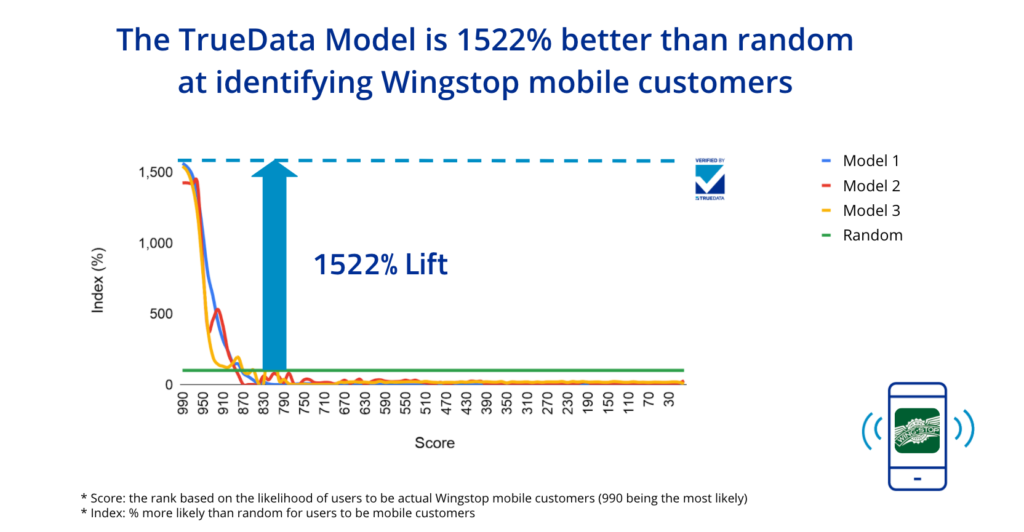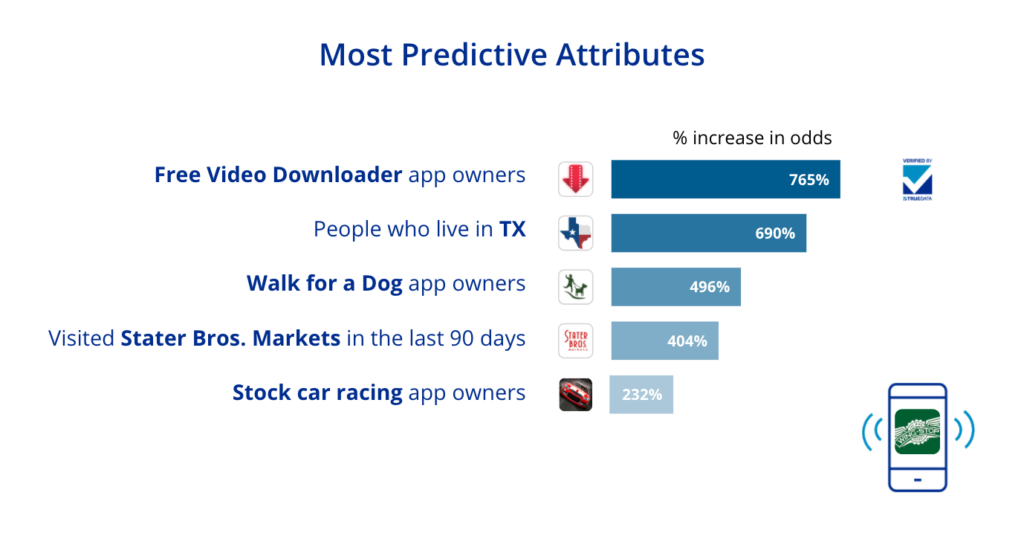According to Fortune, more than 110,000 restaurants closed in 2020 due to COVID, taking 2.5 million jobs with them. Those still open are struggling to stay afloat – and drive more traffic. One vital key to growth for Quick Service Restaurants (QSR) in these challenging times is to develop mobile relationships with customers and encourage more repeat business from mobile customers.
Mobile apps are integral to any growth strategy. They make takeout ordering simpler and more convenient, and they provide a way to deliver offers and support reward programs. So it’s clearly in restaurants’ interests to get customers to install their mobile apps.
The first step in that process is to identify customers who’d potentially want the app. Where do you begin?
At TrueData, we conducted an experiment using Wingstop to see if our machine learning (ML) expertise could help restaurants find consumers who’d be most likely to install and use their mobile apps. When it was all over and the dust had settled, our model proved to be 1522% better than random at identifying potential mobile customers. That’s a significant improvement – and especially powerful because research has shown that online QSR orders can be as much as 18% higher than phone orders.


Here’s how we achieved that result:
First, we selected at random a popular QSR: Wingstop, the Texas-based chicken wing chain operating 1,538 restaurants globally. Next, we applied 9,000+ attributes across TrueData’s anonymous 200M+ digital ID set to predict who would be most likely to become a Wingstop mobile customer. These attributes included: apps installed on a user’s mobile device, demographic factors, device characteristics, and GPS data capturing locations recently visited.
Using ML, our target outcome modeling was hyper-predictive at helping Wingstop spot their next best mobile customer. In this Wingstop case study, we discovered that both app install and place visitation data drove strong lifts in the results. This was unlike our recent McDonald’s case study, where only the app install data drove the most lift. Location visitation data was a more impactful coefficient most likely because Wingstop is a more localized franchise than McDonald’s.


Taking a closer look, here were the most predictive attributes:


These are results that simply could not be produced with manual analysis or segmentation. ML makes it fast and easy. If you’re seeking to leverage ML and big data to quickly target and attract customers to drive revenue and profit, contact us now for a free 30-day trial to run the analysis for your brand. We think you’ll be more than pleased with the results.



Subscribe For Updates